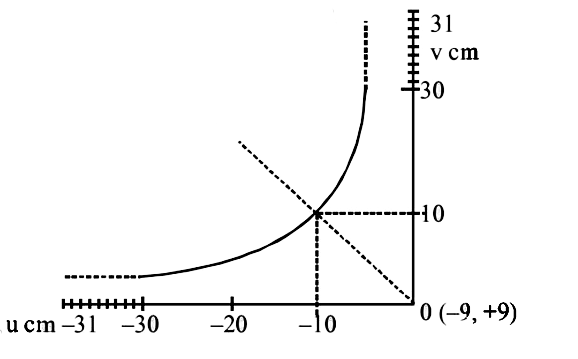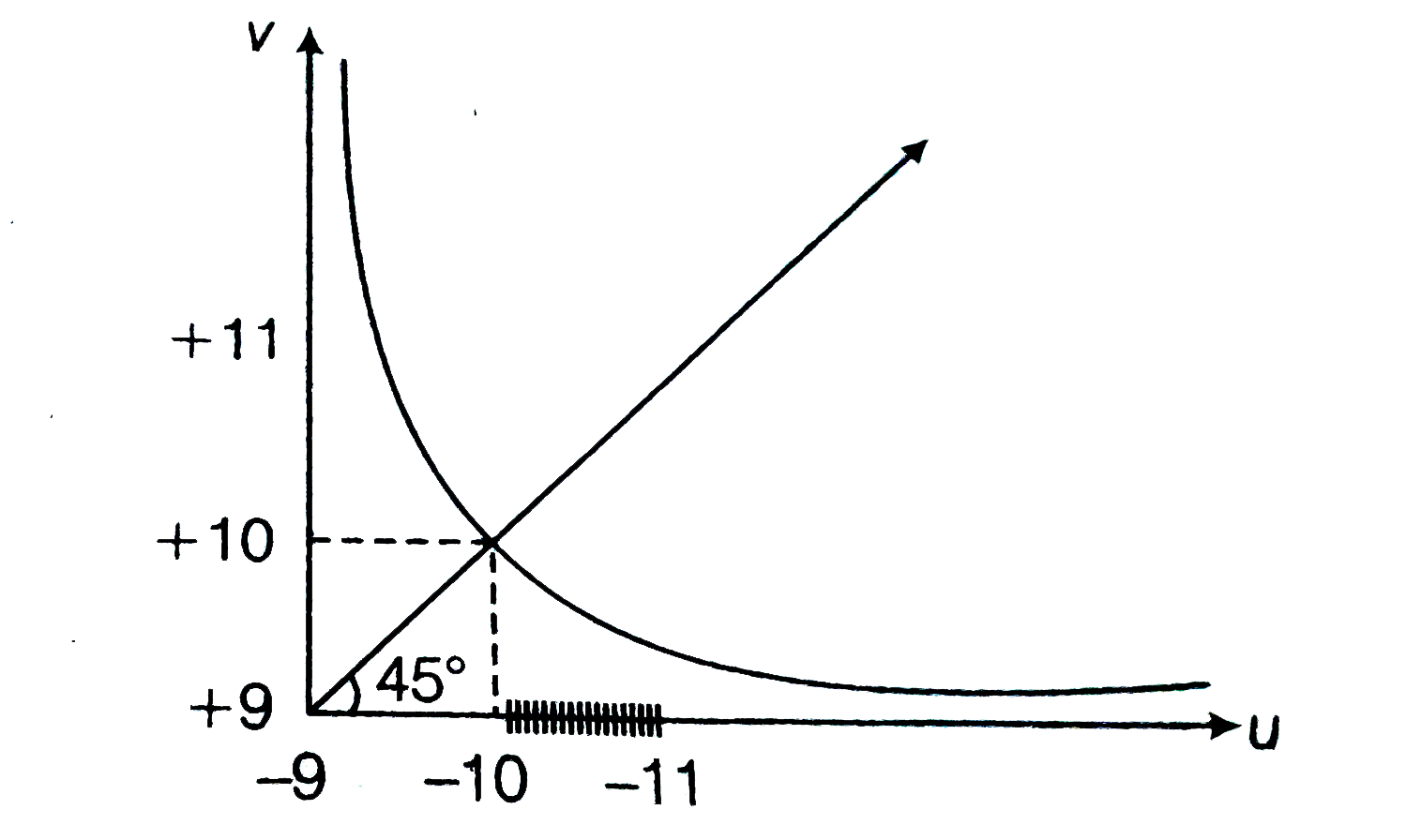In an optics experiment, with the position of the object fixed, a student varies the position of a convex lens. A graph between the object distance u and the image distance v, from the lens, is plotted using the same scale for the two axes. A straight line passing through the origin and making an angle of 45∘ with the X-axis meets the experimental curve at P. The coordinates of P will be
(2f, 2f)
(f2,f2)
(f,f)
(4f, 4f)
The correct Answer is:D
Step by step video & text solution for In an optics experiment, with the position of the object fixed, a student varies the position of a convex lens. A graph between the object distance u and the image distance v, from the lens, is plotted using the same scale for the two axes. A straight line passing through the origin and making an angle of 45^(@) with the X-axis meets the experimental curve at P. The coordinates of P will be by Physics experts to help you in doubts & scoring excellent marks in Class 10 exams.
Topper's Solved these Questions
Similar Questions
Knowledge Check
- Question 1 - Select One
In an optics experiment, with the position of the object fixed, a student varies the position of a convex lens and for each position, the screen is adjusted to get a clear image of the object. A graph between the object distance u and the image distance v, from the lens, is plitted using the same scale for the two axes. A straight line passing through the origin and making an angle of 45∘ with x-axis meets the experimental curve at P. The coordinates of P will be.
A(f2,f2)B(f,f)C(4f,4f)D(2f,2f) - Question 2 - Select One
In an optics ecperiment, with the position of the object fixed, a student varies the position of a convex lens and for each position, the screen is adjusted to get a clear image of the object. A graph between the object distance u and image distance v from the lens, is plotted using the same scale for the two axes. A straight line passing through origin and making an angle of 45∘ with the x-axis meets the experiment curve at P. The coordinate of P will be
A(f2,f2)B(f,f)C(4f,4f)D(−2f,2f) - Question 3 - Select One
In an optics experiment, with the position of the object fixed, a student varies the postion of a convex lens and for each position, the screen is adjusted to get a clear image of the object. A graph between the object distance u and the image distance v, from th elens, is plotted using the same scale for the two axes. A straight line passing through the origin and making an angle 45∘ with the x-axis meets the experimental curve at P. The coordinated of P will be:
A(2f,2f)B(f2,f2)C(f,f)D(4f,4f)
In an optics experiment, with the position of the object fixed, a student varies the position of a convex lens and for each position, the screen is adjustment to get a clear image of the object. A graph between the object distance u and image distance v from the lens, is plotted using the same scale for the axes. A straight line passing through origin and making an angle of 45∘ with the x-axis meets the experimental curve at P. The coordinate of P will be.
View SolutionThe graph between the image distance (v ) and object distance (u) from the convex lens is
View SolutionThe graph between the object distance along the X-axis and image distance along Y-axis for a convex lens is
View SolutionThe combined equation of two lines passing through origin and each making an angle 45∘and135∘ with the positive X axis is….
View SolutionThe graph shown relationship between object distance and image distance for a equiconvex lens. Then focal length of the lens is
 View Solution
View Solution



